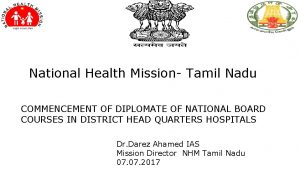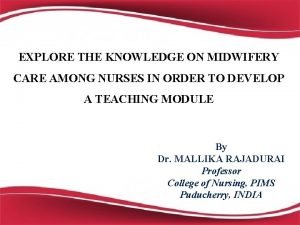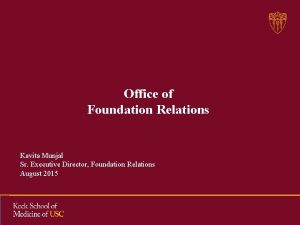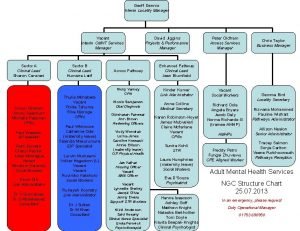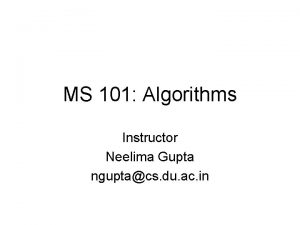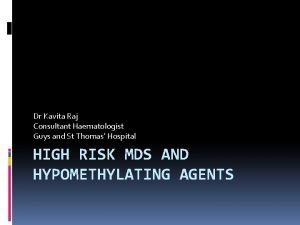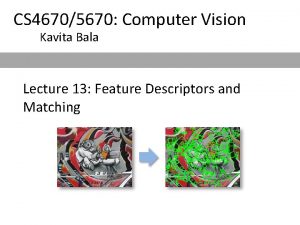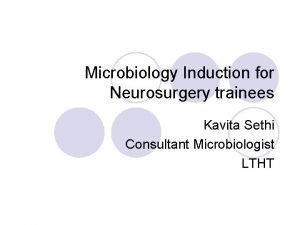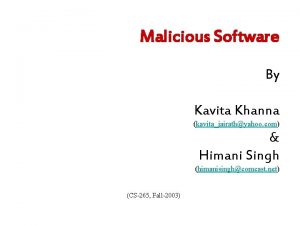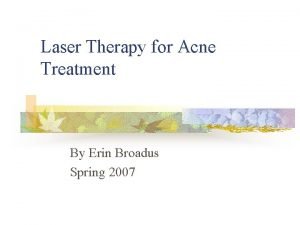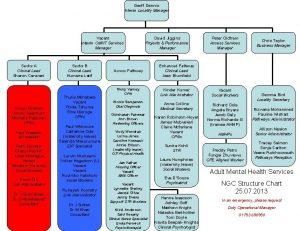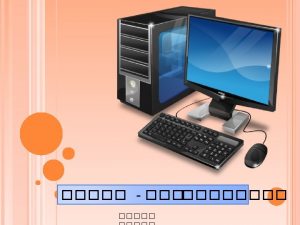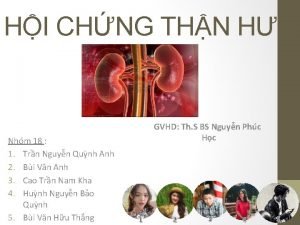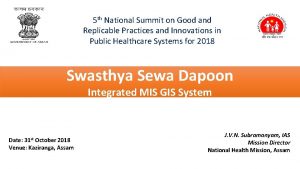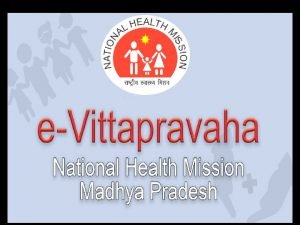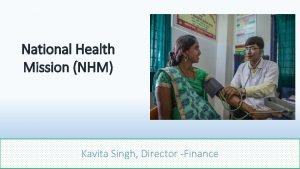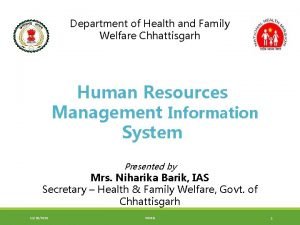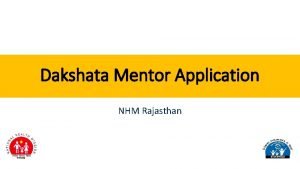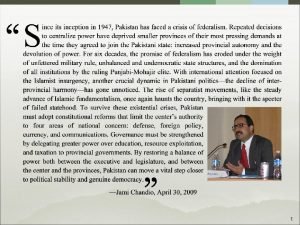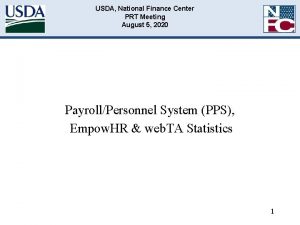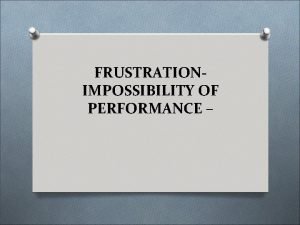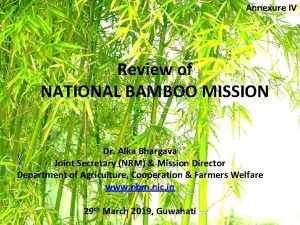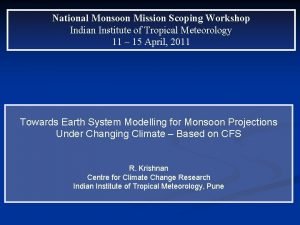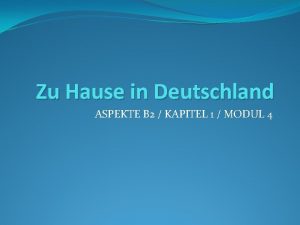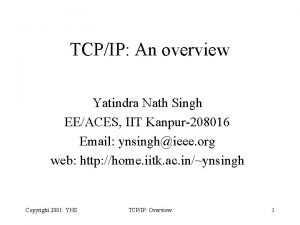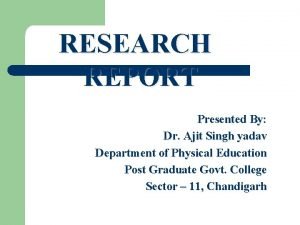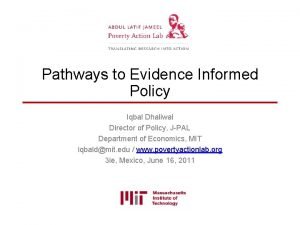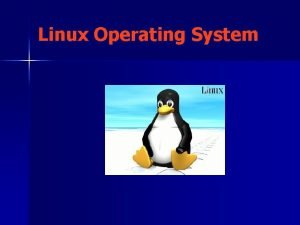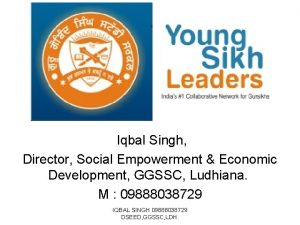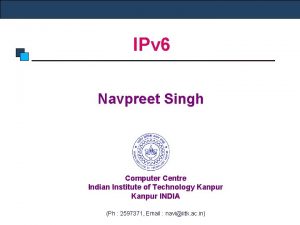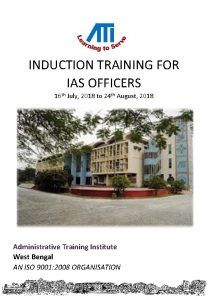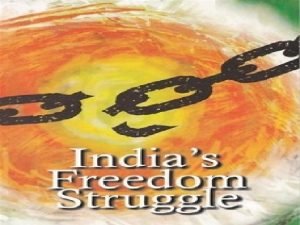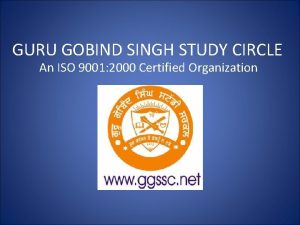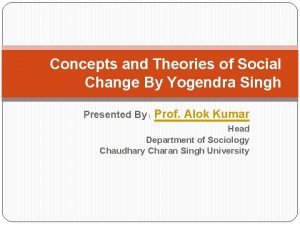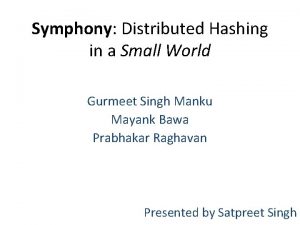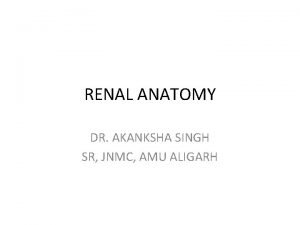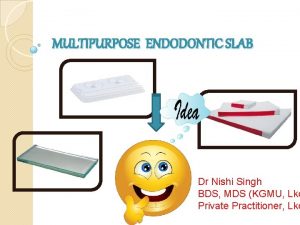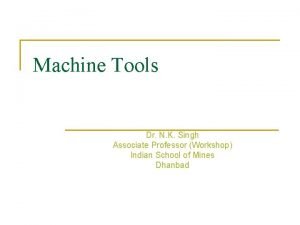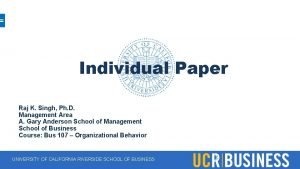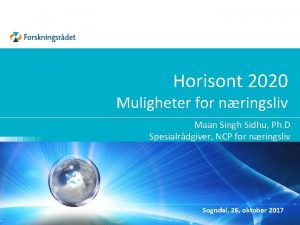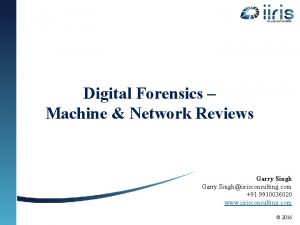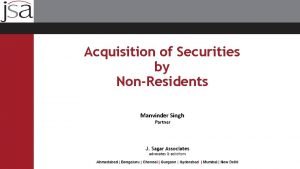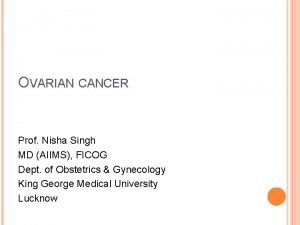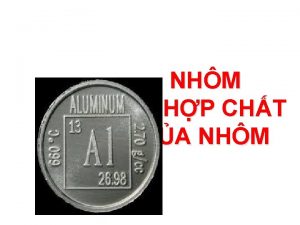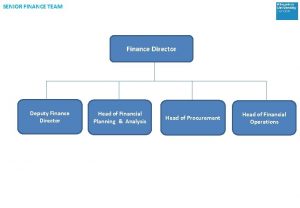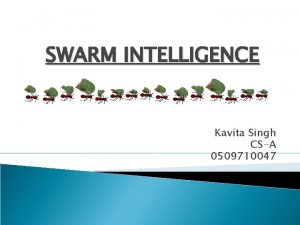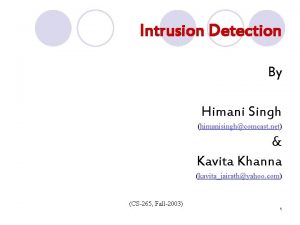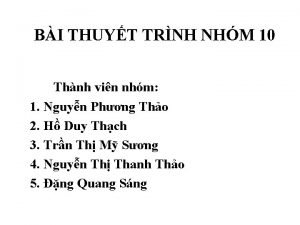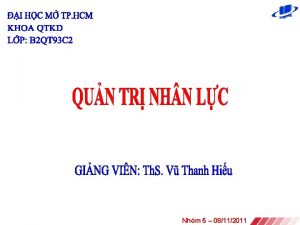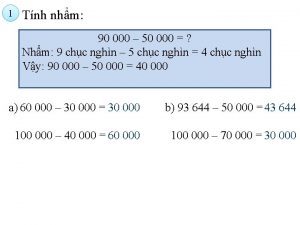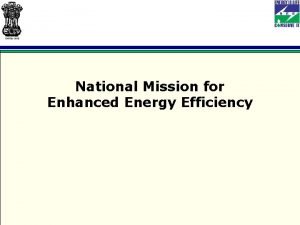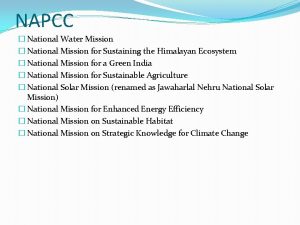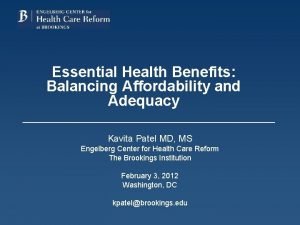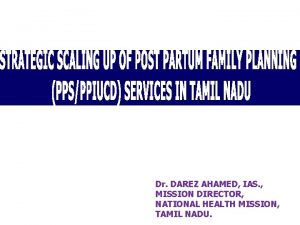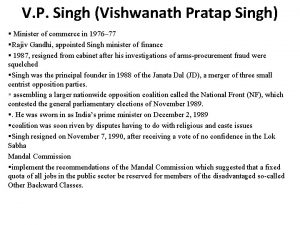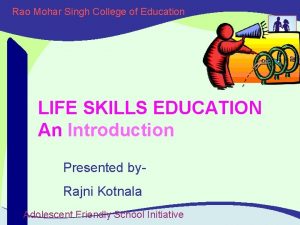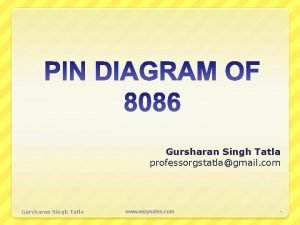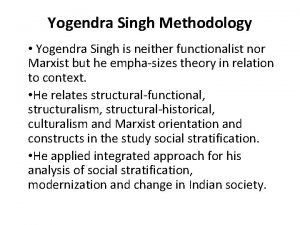National Health Mission NHM Kavita Singh Director Finance
































































- Slides: 64

National Health Mission (NHM) Kavita Singh, Director -Finance

Need of Investment in Public Health • Healthcare spending in India for 2014 is about 4. 7% of its GDP. • Of this Government Health Expenditure (GHE) is 30%. A majority, 62% of healthcare expenditure is Household out of pocket (OOPE). • Nearly 55 million people getting impoverished on account of health care expenditure. • India ranks a low 175/188 in OOPE and 154/185 in terms of Public Health Expenditure out of Total Current Health Expenditure in 2015. • Increase health expenditure by Government as a percentage of GDP from the existing 1. 15% to 2. 5 % by 2025 (NHP 2017). Source: Health financing indicators for India 2014; Global Health Expenditure Data Base (GHED), World Health Organization

Health Policy -2017 • New Health Policy 2017 emphasizes the proposed Health Financing - • Increase health expenditure by Government as a percentage of GDP from the existing 1. 1 5 % to 2. 5 % by 2025. • Increase State sector health spending to > 8% of their budget by 2020. • Decrease in proportion of households facing catastrophic health expenditure from the current levels by 25%, by 2025. Source: New Health Policy 2017

(Rs. In Lakh Crore) Year wise Expenditure to achieve 2. 5% of GDP Year % of expenditure 1 2017 -18 2018 -19 2019 -20 2020 -21 2021 -22 2022 -23 2023 -24 2024 -25 2 1. 20% 1. 27% 1. 45% 1. 70% 1. 95% 2. 20% 2. 50% GDP assuming GDP with Rate Expenditure @7. 5% at current of Inflation on Health (% prices of 2017 -18 @4%only of GDP) 3 166. 28 178. 75 192. 15 206. 56 222. 06 238. 71 256. 61 275. 86 4 172. 93 185. 90 199. 84 214. 83 230. 94 248. 26 266. 88 286. 89 Source: GDP of 2017 -18, as per Economic Survey, Vol. II for the year 2017 -18. 5=4*2 2. 08 2. 23 2. 54 3. 11 3. 93 4. 84 5. 87 7. 17 32% of Expend. for Centre 68% of Expend. for State 7 0. 66 0. 71 0. 81 1. 00 1. 26 1. 55 1. 88 2. 30 8 1. 41 1. 52 1. 73 2. 12 2. 67 3. 29 3. 99 4. 88

Allocation –Do. HFW Rs. in Crore Particulars 12 th Plan Approved Outlay NHM 1, 93, 405. 71 91, 022. 82 (47. 06% of 12 th Plan Outlay) 25, 155. 00 (15. 6 % increase over last BE) 26, 945. 00 (7% increase over last BE) 2, 68, 551. 00 (Depart of H&FW) 1, 29, 150 (48. 09% of 12 th Plan Outlay) 52, 800. 00 61, 398. 12 (11. 5% over last BE) (16% increase over last BE) (NRHM+ NUHM) Total (Do. HFW- NHM + Health) 12 th Plan Actual Budgetary Allocation BE (2018 -19) BE (2019 -20) # New Streams of Health Financing – Health & Education Cess - Existing 3% education Cess to be replaced by 4% health and education cess. Higher Education Funding Agency (HEFA) to be restructured to fund infrastructure and research in medical Institutions. India Infrastructure Finance Corporation Limited (IIFCL) will be utilized to raise funds for Health Projects.

Department-wise Budget Estimate (Gross) 2018 -19 Rs. in Crore Health NHM B. E. 2018 -19 20671. 00 25154. 00 RSBY 2, 000. 00 Department PMJAY HRH & Medical Education Tertiary Care Programme Annual Budget B. E. 2019 -20 23, 097. 12 26, 945. 00 156. 00 6400. 00 4, 225. 00 4250. 00 750. 00 52, 800. 00 61, 398. 12

National Rural Health Mission (NRHM) launched on 12 th April, 2005 Strengthen hands of the State Governments in improving health care delivery by providing technical and financial support. To bring greater focus on high focus States and rural population, particularly marginalized and vulnerable population. Architectural correction through integration of vertical programmes, decentralization and communitization.

National Urban Health Mission (NUHM) launched on 1 st May, 2013 To strengthen the existing primary health care facilities and provide new facilities for the un-served population. 1057 cities and towns covered. Strengthening facilities in urban area in term of infrastructure, equipment and manpower.

National Health Mission - Vision “Attainment of Universal Access to Equitable, Affordable and Quality health care services, accountable and responsive to people’s needs, with effective inter-sectoral convergent action to address the wider social determinants of health”.

NATIONAL HEALTH MISSION Flexible Pools under NHM

National Health Mission (NHM) ` 2 Sub-Missions NRHM –Flexible pool(I) RCH Pool (II) Health System Strengthening Pool (i) Other Health System Strengthening (ii) Comprehensive Primary Health Care (ii. I) ASHA Benefit Package including social benefits Communica ble Disease Pool NUHM NCD Pool Infrastructure Maintenance Health System Strengthening Comprehe nsive Primary Health Care Health System Strengthening- includes components -- NPCD, NOHP, Burns & Trauma, NPCF and other New Initiatives under NCD

NATIONAL HEALTH MISSION - COMPONENTS NRHM- RCH Pool § RCH Flexipool- • RMNCH + A - Reproductive, Maternal, Neonatal, Child & Adolescent Health. • Immunization- Routine Immunization & Pulse Polio Immunization. • NIDDCP- National Iodine Deficiency Disorder Control Programme § Health System Strengthening – ASHAs, Human Resources including AYUSH, Mobile Medical Units, Referral Transport, Free Drugs & Free Diagnostics, Biomedical Equipment Management, Quality Assurance & Kayakalp, Infrastructure, etc. National Urban Health Mission • To strengthen the existing primary health care facilities and provide new facilities for the un-served population in urban areas & urban poor. Major components Planning & Mapping, Programme Management, Training, Human Resources, Community process.

NATIONAL HEALTH MISSION - COMPONENTS Communicable Diseases Pool • • • RNTCP – Civil Works, Laboratory materials for testing etc. NVBDCP- Malaria, Dengue, AES etc. NLEP- HR, Mobility support IDSP- HR, Mobility support NVHCP-National Viral Hepatitis Control Programme, Drugs Non Communicable Diseases Pool • National Prog. For Prevention & Control of Cancer, Diabetes, Cardiovascular Diseases & Stroke (NPCDCS) • National Prog. for Control of Blindness (NPCB). • National Mental Health Prog. (NMHP) • National Tobacco Control Prog. (NTCP) • National Prog. for Health Care of Elderly (NPHCE) Infrastructure Maintenance • To meet salary requirement of Auxiliary Nurse Midwives (ANMs) and the Lady Health Visitors (LHVs) etc.

Progress

Financial Progress under NHM National Health Mission (NHM) Two Sub Missions (NRHM &NUHM) Central Grants of Rs. 222, 114 Crore has been released to strengthen Health System under NHM. The States have contributed Rs. 64, 647 crore towards State share under NHM in the 60: 40/90: 10 ratio. Total funds of Rs. 286, 761 crore was made available till 2018 -19.

PLAN WISE ALLOCATION & RELEASE UNDER NHM (Rs. in crore) Financial Year B. E. R. E. Central Expenditure 1 10 th FYP (2 years) 15, 424 13, 951 13, 771 99% 2 11 th FYP 70, 030 68, 064 66, 131 97% 3 12 th FYP 1, 00, 748 91, 023 90, 184 99% 9 2017 -18 21, 941 26, 110 25, 975 10 2018 -19 25154 26, 118 26, 053 Total (NHM) 233, 297 225, 266 222, 114 Sr. No. % Expenditure against R. E. 99% 100% 99%

Absorption capacity of States (Budget Vs Release) 30, 000 Rs. in crore 25, 975 26, 118 26, 111 26, 053 25, 000 20, 000 15, 000 11, 930 10, 669 10, 000 6, 000 5, 000 0 7, 951 6, 285 7, 487 20, 000 18, 100 17, 127 16, 509 14, 960 18, 872 17, 628 18, 295 17, 000 14, 696 13, 378 16, 763 18, 215 18, 038 18, 282 13, 306 11, 239 10, 380 2005 -06 2006 -07 2007 -08 2008 -09 2009 -10 2010 -11 2011 -12 2012 -13 2013 -14 2014 -15 2015 -16 2016– 17 2017– 18 2018 -19*

Proposed Vs. Available Budgetary Outlay for National Health Mission Sl. No. Name of the Scheme 2018 -19 (Proposed) 2018 -19 (Approved) 2019 -20 (Proposed) 2019 -20 (Approved) 1 NRHM-RCH Flexible Pool 16, 019. 60 15, 006. 33 22350. 00 16, 885. 73 a RCH Flexible Pool including RI, PPI and NIDDP 7, 000. 00 5253. 51 8720. 00 5253. 51 b Health System Strengthening under NRHM 9, 019. 60 9752. 82 13850. 00 11, 632. 22 2 NUHM -Flexible Pool 1, 000. 00 875. 00 1400. 00 950. 00 3 Flexible Pool for Communicable Diseases 2, 620. 40 1928. 00 3200. 00 1928. 00 2, 000. 00 1004. 67 3100. 00 717. 00 6, 360. 00 5693. 41 6643. 00 6043. 52 78. 71 373. 49 231. 00 357. 36 273. 71 63. 36 28, 352. 42 25154. 61 36, 987. 36 26, 945. 00 5 Flexible Pool for Non-Communicable Diseases, Injury & Trauma Infrastructure Maintenance 6 Others including Pilot Projects, NPMU, DR 4 10 PMDP For Jammu & Kashmir Total

Need for Enhanced Allocation ØStrengthening of Sub Health Centers as Health & Wellness Centers to provide comprehensive primary care. ØComprehensive Primary Health Care including screening of common NCD such as Hypertension, Diabetes, common Cancer. ØIncreasing number of PHCs and CHCs as per IPHS norms and upscaling of existing initiatives e. g. strengthening facilities to IPHS ØUp- scaling Free Drugs & Diagnostics Scheme.

Need for Enhanced Allocation ØNeed to eliminate TB and Measles ØStrengthening of District Hospitals to provide multispecialty care & Training and e-Hospital Implementation ØUniversal Health Coverage (UHC) Pilots ØScaling up of new life saving vaccines ØBudgetary provision for Diagnosis, Treatment and e-health initiatives ØStrengthening of Drug regulatory system in the country

ALLOCATION FOR 2019 -20 UNDER DIFFERENT POOLS OF NHM Sl. No. Name of the Flexible Pools Allocation (Rs. in crore) % of Allocation A NRHM-RCH Flexible Pool 16, 885. 73 63% 1 RCH Flexible pool including Routine Immunization, Pulse Polio Immunization, National Iodine Deficiency Disorders Control Programme etc. 5, 253. 51 19% 2 Health System Strengthening under NRHM 11, 632. 22 43% B National Urban Health Mission-Flexible Pool 950. 00 4% C. Flexible Pool for Communicable Diseases 1, 928. 00 7% D. Flexible Pool for Non-Communicable Diseases, Injury & Trauma 717. 00 3% E. Infrastructure Maintenance 6, 043. 41 22% F. Misc. Programme (NPMU, Pilot projects, SDRS, PMDP etc. ) 420. 86 2% Grand Total 26, 945. 00

ALLOCATION FOR 2019 -20 UNDER NHM 2% 22% RCH Flexible pool 19% Health System Strengthening under NRHM National Urban Health Mission. Flexible Pool 3% 7% 4% Flexible Pool for Communicable Diseases 43% Flexible Pool for Non. Communicable Diseases, Injury & Trauma

ACTIVITY-WISE APPROVALS UNDER NRHM-RCH FLEXIBLE POOL 2018 -19 S. No 1 2 3 4 5 6 7 8 9 10 RCH Flexible Pool Activities Maternal Health (including JSY & JSSK) Programme / NRHM Management Cost Family Planning RBSK Training Child Health (including JSSK) Adolescent Health / RKSK Tribal RCH Vulnerable Groups PNDT Activities TOTAL Amount(Rs. in Lakhs) 329, 436. 45 229, 498. 43 93, 243. 92 74, 261. 74 50, 390. 50 32, 419. 32 5, 132. 68 1, 518. 55 816. 57 1, 238. 45 % 40. 28 28. 06 11. 40 9. 08 6. 16 3. 96 0. 63 0. 19 0. 10 0. 15 817, 956. 62 100

ACTIVITY-WISE APPROVALS UNDER NRHM-RCH FLEXIBLE POOL 2018 -19 Adolescent Health / RKSK 1% Tribal RCH Vulnerable Groups 0% PNDT Activities 0% 0% Training Child Health (including JSSK) 6% 4% RBSK 9% Family Planning 11% Programme / NRHM Management Cost 28% Maternal Health (including JSY & JSSK) 40%

ACTIVITY-WISE APPROVALS UNDER HEALTH SYSTEM STRENGTHENING POOL 2018 -19 (in descending order) S. No. Activity Amount (Rs. in Crore) 1 2 3 4 5 6 7 8 9 10 11 12 13 Human Resources PROCUREMENT ASHA Hospital Strengthening National Ambulance Service UF/AMG /RKS Planning, Implementation and Monitoring IEC-BCC NRHM Innovations National Mobile Medical Vans PPP/ NGOs Other Expenditures Drug Ware Housing Mainstreaming of AYUSH Total 9471. 33 527871. 46 248867. 42 192092. 83 111052. 46 119635. 08 112270. 49 64629. 85 40320. 57 25324. 28 69686. 22 3317. 14 3219. 97 229. 22 1527988. 33 14 % 0. 62 34. 55 16. 29 12. 57 7. 27 7. 83 7. 35 4. 23 2. 64 1. 66 4. 56 0. 22 0. 21 0. 02 100

NHM PLANNING PROCESS

PIP Guidelines and resource envelopes Based on State priorities and PIP guidelines Communicated to States/UTs to submit revised PIP based on discussions during pre -appraisal/1 st Draft comments States submit Draft PIP Consolidated comments received from all divisions Communicated to States/ UTS Divisions examine PIP and share comments/ recommendations MOHFW holds pre appraisal meeting/ consultation with States to obtain details When States/UTs do not respond to request of supporting details To be circulated to Divisions Revised proposals accepted only on sections where additional information has been sought. NPCC meetings PIPs appraised in NPCC meetings as per the Resource Envelope of States and ROPs issued accordingly

BOTTOM -UP APPROACH FOR PLANNING Integrate State Programme Implementation Plan State District Health Action Plan District Block Health Action Plan Block CHC/PHC Gram Panchayat Inputs from Gram Panchayat level and CHC/PHCs Integrate District Integrate Block CHC/PHC Gram Panchayat Integrate CHC/PHC Gram Panchayat

Financial implications Central Share State Share Unspent balance Total Resource envelope

RESOURCE ENVELOPE q Unspent balance (Committed & Un-committed) at the beginning of the Year q Central (GOI) Allocation to the States/UTs --80% (assuming no reduction on account of fulfillment of conditionalities) and --20% for Incentives q State Share 40% or 10% (NE and Hilly States) Less: Committed Un-spent Balance for validation Net Resource Envelope Available for Fresh Approvals From FY 2019 -20, Separate proposals are asked on unspent balances as supplementary proposals

WEIGHTAGE FOR ALLOCATION OF FUNDS Population of Each State is given a weightage as under: NE and 3 Hilly States (H. P. , J&K & Uttrakhand) (11) : 3. 2 Small UTs : (4) (Lakshadweep, Daman & Diu, D& N Haveli & Andaman) : 3. 0 EAG States, Except Chhattisgarh, Jharkhand (5) : 1. 3 Chhattisgarh & Jharkhand (2) : 1. 5 All other States/UTs (14) : 1. 0

BASIS OF CENTRAL ALLOCATION TO STATES/UTS Name of the Pool Basis of Allocation RCH Flexible Pool 75% Total population & 25% Rural area Mission Flexible Pool now Health Systems Strengthening 75% Rural Population & 25% Rural Area 50% weightage on Urban Population & 50% weightage on slum population National Urban Health Mission (NUHM) Flexible Pool (Covering Cities in State Capital and Distt. HQ with Population 30, 000 and Other Cities with 50, 000 & above population) – 1000 + Cities Flexible Pool for Communicable Disease burden basis Flexible Pool for Non-Communicable Disease 75% Total population & 25% Rural area

COMMITTED & UN-COMMITTED BALANCE Committed Unspent Balance comprises of ---(i) All advances given to Subsidiary Units, Implementing Agencies, (ii) Work orders issued for any work but not paid (such as Procurements, Civil Works etc. ) (iii) Any other activity committed for implementation but not initiated during the current financial year e. g. ASHA’s, Training, JSY, JSSK. q All such activities need to be revalidated for expenditure in the next financial year. q No fresh approvals is required for these activities. q These Committed activities are against the ROP approvals already given.

COMMITTED & UN-COMMITTED BALANCE Uncommitted Unspent Balance : q. Unspent Balance remained for those activities which could not be commenced in the current financial year and expected not to be utilized further. q. The unspent balance assigned under the pools for expenditure becomes free for fresh approval in the next financial year. Letter on disclosure of Unspent Balances though Supplementary PIPJS P letter on USB. pdf for 2019 -20 have been issued JS P letter on USB. pdf

FUNDING PATTERN UNDER NHM • From F. Y. 2015 -16, keeping in view of the recommendation of 14 th Finance Commission the Centre- State funding pattern has been revised to 60: 40 from 75: 25 in all States excluding NE & 3 Hill States where it is 90: 10. • All UTs are 100% Centrally funded except Delhi & Puducherry. • Incentive Pool of 20% of Central allocation has been created from 2018 -19 to be effected from 2019 -20 on the basis of conditionalities of 2018 -19.

FLEXIBILITIES UNDER NHM A. In–built flexibility as PIPs are proposed by States. B. Utilise the amount of matching State share under any of the programme /schemes under any of the flexible pools of NHM as per the need of the State. C. Under Infrastructure Maintenance (IM), 100% releases are made by way of reimbursement on the basis of ASE and instalment payment made towards salary, therefore the State share accrued under IM can be used as per the discretion of the State. D. Pay demand based activities, salaries not to be withhold. Payment can be made from savings available under any pool.


Release under NHM q Two types of Grants in aid are released to States a) Cash Grant b) Kind Grant q. Funds are released in 3 parts --§ General , Scheduled Caste Sub Plan (SCSP), Scheduled Tribe Sub Plan (STSP). § All releases are made on the basis of Census Population of 2011. q Further break up releases in Revenue and Creation of Capital Assets. Creation of capital assets involved in Health System Strengthening, NUHM and NCD. Basically where civil construction is involved.

CRITERIA FOR RELEASE OF FUNDS q. First release of 75% of 80% of B. E. a) b) c) d) e) No shortfall under State’s Matching contribution. Provisional UCs of last F. Y. Regular Financial Reporting and Physical Reporting in FMR & SFP Considering the Unspent balance Transfer of fund from Treasury to SHS. q. Final release of balance 25% of 80% of B. E Same as (a) to (e) above. Receipt of Statutory Audit Report and Audited UC Ensure the increase in State Health Budget by 10% over last year. 20% of funds under Flexi Pools have been earmarked towards Incentivization of States/Uts.

New Initiatives • Single Bank Account to avoid parking of funds and better financial utilisation. • National Consultation with Banks for finalisation of RFP has been held and is in the process of dissemination. • Dash Board is being developed in support of NIC for online booking of expenditure in FMR from peripheries. 40

Cost Benefits & Cost Control Practices Cost Control Mechanisms in NHM Context: • Procurements through Competitive Bidding • Differential Financing under Untied funds, Referral Transport etc. • Need based procurements. • Centralized procurement of medicines through bulk purchases. • Single bank account system to avoid loss of interest.

Auditing under NHM • Performance Audit under NHM by CAG • Statutory Audit by CAG empanelled major CA Audit firms. (Mandate – 100% for DHS and 40% for Blocks) • Concurrent Audit by CA Audit firms on monthly basis. However, reports to be issued on quarterly basis. (100% for all Blocks) • IPAI Audit for selected States. • Internal Audit.

Critical Observations q. Avoid parking of funds as that would hamper the implementation. q Not to include the Bank balances of Non-NHM Schemes such as Finance Commission, NABARD, State Health Schemes as that would make the overall balance under NHM heavier in the Balance sheet and leading to CAG’s observation on high unspent balance with State Health Societies. q. Prohibit the diversion of NHM funds to State run health schemes.

Critical Observations q. Civil works: Rule 351 of PWF&AR provides that the availability of land should be ensured before awarding the construction work. q. Bank accounts needs to be operated by Joint signatories, at least one person must be regular. q. Closure of Non-Operative Banks Accounts. q. Mapping of All Banks with PFMS application. q. Funds received at SHS , DHS and Blocks need to be transferred immediately to subsidiary units after considering the unspent balances.

Critical Observations q. Ensure Compliance of GFR Rules, 2017 for release of funds, procurement of Services, Goods etc. q State Finance Rules for Procurement of Services, Goods may be followed. q. Temporary loans can be taken and to be returned to original pool on receiving of funds. Permanent diversion is prohibited. q. Regular monitoring of advances with Age wise analysis q. Ensure JSY and ASHA Payments through DBT q. Ensure submission of Consolidated FMR with Physical achievements on monthly basis covering all programmes of NHM (including IM)

Critical Observations q. FMR includes expenditures from each programme and of all levels. q. Monitoring and ATR on the findings of the Concurrent Audit and Statutory Audit. q. Plan training programmes on FM within the State and District q. Understand implement the concept of ongoing activities and issue directions for continuation of such activities after 31 st March without waiting for ROP. 46

Critical Observations q. Non preparation of Bank Reconciliation Statement (BRS). q. Non-maintenance of Fixed Assets Registers. q. Splitting of Invoices to avoid competitive bidding – Especially Procurement Processes. q. Booking of expenditure without approvals or more than approvals. q. Non compliance of procurement procedures. q. Books of accounts not closed at year end and interest nor accounted for.

Important Communications q. Advances to Implementing Agencies for Civil works, Procurements may be treated as deemed Expenditure for the purpose of Release proposals. q Refer to D. O. Letters issued from time-to-time providing instructions/ guidelines – such as Banking Arrangement, Temporary diversion of funds, non- holding of committed liabilities etc. q. Refer D. O. letters on separate reporting of expenditure given under Tribal Sub Plan (TSP). etc.

CHALLENGES q. Compliance of DOE conditionalities on just in time basis q. Ensure to receive funds from State Treasury to SHS within 15 days of transfer. q. Fulfillment of ROP conditionalities to earn Incentives. q. Increase in Health Budget at least by 10% over last year. q. Improve the pace of utilization to avail the full Central Grant.

CHALLENGES q Timely submission of Audited UCs q Submission of Certified Audited Expenditure on time to claim arrears under IM. q Contribution of Matching State Share simultaneously with Central Grants including IM q Statutory Audit Report to be approved by Governing Body. q Also laying of Audit Report in the house of State Legislative Assembly.

CHALLENGES q. Timely appointment of Auditor (Statutory and Concurrent Audit) q. Sharing of Concurrent Audit Summary with the Ministry. q. Creation of Internal control team to monitor the progress on Civil works, HR placement , Procurements etc. q. Review of Financial progress on regular basis against the monitorable indicators.

CONDITIONALITIES FRAMEWORK: 2018 -19

1. Conditionality Incentive/penalty Source of Incentive/ verificatio Penalty n Incentive or Based on the ranking which will measure NITI penalty based on incremental changes: Aayog NITI Aayog 1. States showing overall improvement to be report ranking of States incentivized on ‘Performance 2. States showing no overall increment get no on Health penalty and no incentive Outcomes’ 3. States showing decline in overall performance to be penalized (% of incentive/penalty to be in proportion to overall improvement shown by the best performing State and the worst performing State: +40 to -40) +40 to -40

Conditionality Incentive/penalty 2 Ranking of District At least 75% (in Non EAG) and 60% Hospitals in terms (in EAG and NE states) of all District of input and Hospitals to have at least 8 fully service delivery functional specialties as per IPHS : 10 points incentive Less than 40% in Non EAG and 30% in EAG to be penalized up to 10 Points Source of verification Incentive/ HMIS and NITI Aayog DH ranking report +10 Penalty to -10

Conditionality Incentive/penalty 3 Operationalization At least 5% of the total budget to be of Health and proposed for HWC and CPHC. State to Wellness Centers operationalize 15% of SCs and PHCs as (HWC) HWCs. Source of verification State report Incentive/ Penalty +20 NHSRC report to RHS -20

Conditionality Incentive/penalty 4 % districts covered 75% of the districts covered-10 points under Mental 50% of the districts in Non EAG and health program 40% of the districts for EAG- incentives and providing 6 Points services as per framework Less than 40% EAG and less than 50% Non EAG to be penalized 6 Points Less than 30% in EAG and 40% in Non EAG to be penalized 10 Points Source of verification Report from Mental Health Division Mo. HFW Incentive/ Penalty +5 to -5

Conditionality Incentive/penalty 5 % of 30 plus 15% of 30 plus population screened for population NCDs: 10 Points incentive screened for NCDs 7% of 30 plus population screened for NCDs : 6 Points Incentives Less than 3% of 30 plus population screened for NCDs : 6 Point penalty Less than 2% of 30 plus population screened for NCDs : 10 Points penalty (Out of total State population) Source of verification Report from NCD division Mo. HFW and State reports Any Survey data available Incentive/ Penalty +5 to -5

Conditionality 6 HRIS implementation Incentive/penalty Source of verification Ensure implementation of HRIS for HRIS (State) all HRH (both regular and HMIS contractual ) in the State. Salary report invoice and transfer order to be generated by HRIS. Line listing of all staff for all facilities to be available. HRIS data should match with HMIS reporting. Cases where it does not state should provide reason and numbers. +10 to -10 for HRIS operationalization and +5 to -5 for synchronization with HMIS State where data matches: 5 points Incentive/ Penalty +15 to - 15

Conditionality Incentive/penalty 7 Star rating of PHCs 75% (in Non EAG) and (60% in EAG and (both Urban and NE) of the PHCs having 3 or more star rural) based on rating : 5 Points incentives inputs and provision of the 50% (in Non EAG) and 40% (in EAG and service package NE) PHCs having 3 or more star rating: 2 agreed Points incentive Less than 40% (in Non EAG) and 30% (in EAG and NE) of PHCs having 3 or more star rating to be penalized: 5 Points Source of verification HMIS Incentive/ Penalty +5 to -5

PFMS

PFMS q. Public Financial Management System (PFMS) is an application developed by the Ministry of Finance (CGA) for on line tracking of funds on real time basis. q. Continuous refresher trainings and assistance are being provided to States/UTs with the coordination of PFMS Technical Team for implementation by the Ministry under NHM. q. CGA Office has chosen NHM for EAT Module to implement beyond block level. q. CGA office has created SPMU/ Local Chapters in 30 States/UTs to provide support to all 36 States/UTs for the full implementation of PFMS in respective States/UTs. State wise PFMS Registration Status

PFMS -CHALLENGES • PFMS and Treasury integration is completed in 30 States. • Inadequate Internet connectivity in North Eastern States and Rural Areas. • Integration of Government Tax Agencies on PFMS. • Complete Accounting Package for Audit Purpose. • Synchronization of various state run applications with PFMS such as ASHA Soft, OJAS etc.


Health Care Financing S. No. Indicator NHA (2004 -05) NHA (2013 -14) NHA (2014 -15) 1. Total Health Expenditure (THE) as percent of GDP 4. 2 4. 0 3. 9 2. Government Health Expenditure as percent of Total Health Expenditure 22. 5 28. 6 29. 0 3. Private Health Insurance Expenditure as percent of Total Health Expenditure 1. 6 3. 4 3. 7 4. Out of Pocket Expenditure as percent of Total Health Expenditure 69. 4 64. 2 62. 6
 Kavita singh unc
Kavita singh unc Lisa malosky
Lisa malosky Raj birk
Raj birk National health mission tamil nadu
National health mission tamil nadu National rural health mission
National rural health mission Kavita munjal
Kavita munjal Lurvin munisami
Lurvin munisami Kavita gupta md
Kavita gupta md Dr kavita raj
Dr kavita raj Kavita bala
Kavita bala Kavita sethi
Kavita sethi Ruhani khanna
Ruhani khanna Dr. kavita mariwalla
Dr. kavita mariwalla Kavita deepak knights
Kavita deepak knights Nhm writer
Nhm writer H nh m
H nh m Mis gis asha payment
Mis gis asha payment E-vitta pravaha nhm mp
E-vitta pravaha nhm mp Hris nhm jharkhand
Hris nhm jharkhand Cg health hrmis
Cg health hrmis Dakshata nhm
Dakshata nhm National programmes related to child health and welfare pdf
National programmes related to child health and welfare pdf National finance commission
National finance commission National finance commission
National finance commission National finance center
National finance center Davis contractors v fareham udc
Davis contractors v fareham udc Ayush license karnataka
Ayush license karnataka National bamboo mission
National bamboo mission National mission for sustainable agriculture
National mission for sustainable agriculture National monsoon mission
National monsoon mission Horizon europe mission soil health and food
Horizon europe mission soil health and food National unification and the national state
National unification and the national state Sandeep singh jolly berlin
Sandeep singh jolly berlin Yatindra nath singh
Yatindra nath singh Singh song summary
Singh song summary Sexual harrasment prevention training
Sexual harrasment prevention training Dr ajit singh
Dr ajit singh Iqbal singh dhaliwal
Iqbal singh dhaliwal Linux operating system presentation
Linux operating system presentation Ggssc law
Ggssc law Navpreet singh iit kanpur
Navpreet singh iit kanpur Motivational interviewing stages of change
Motivational interviewing stages of change Ips alankrita singh
Ips alankrita singh Usha mehta savitribai phule
Usha mehta savitribai phule Guru gobind singh study circle books
Guru gobind singh study circle books Mannu singh vs umadat pande
Mannu singh vs umadat pande Muninder singh
Muninder singh Parkaranjot singh
Parkaranjot singh Parochialisation and universalisation
Parochialisation and universalisation Bro bakht singh family
Bro bakht singh family Sukhjit singh de anza
Sukhjit singh de anza Gurmeet singh manku
Gurmeet singh manku Nawab kapur singh
Nawab kapur singh Right renal
Right renal Dr nishi singh
Dr nishi singh Dr nk singh
Dr nk singh Raj k singh
Raj k singh Renural
Renural Garry singh iiris
Garry singh iiris Allama iqbal introduction
Allama iqbal introduction Manvinder singh jsa
Manvinder singh jsa Ca rajiv singh
Ca rajiv singh Janice singh
Janice singh Immedible
Immedible Nisha singh md
Nisha singh md



